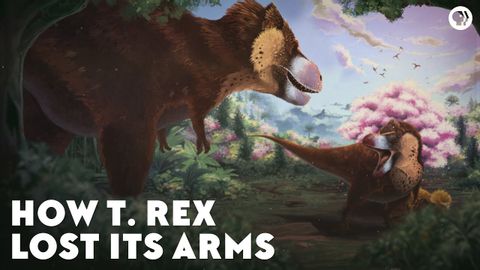霸王龙如何丢下手臂(How the T-Rex Lost Its Arms)
joey joey 發佈於 2021 年 05 月 03 日  沒有此條件下的單字
沒有此條件下的單字US /pɚˈspɛktɪv/
・
UK /pə'spektɪv/
- n. (c./u.)透視;觀點,態度;觀點;恰當的比重
US /ˈdisənt/
・
UK /ˈdi:snt/
- adj.正派的; 得體的;正派的;慷慨的;穿著得體的;相當可觀的
- v.t./i.出現;估計;我認為〜;認為
- n.身影;(計算過的)數量;肖像;圖;形狀;人物;名人;人影;數字
- adj.冒犯的,惡毒的;刻薄的;不友善的;下流的;猥褻的;危險的;嚴重的

